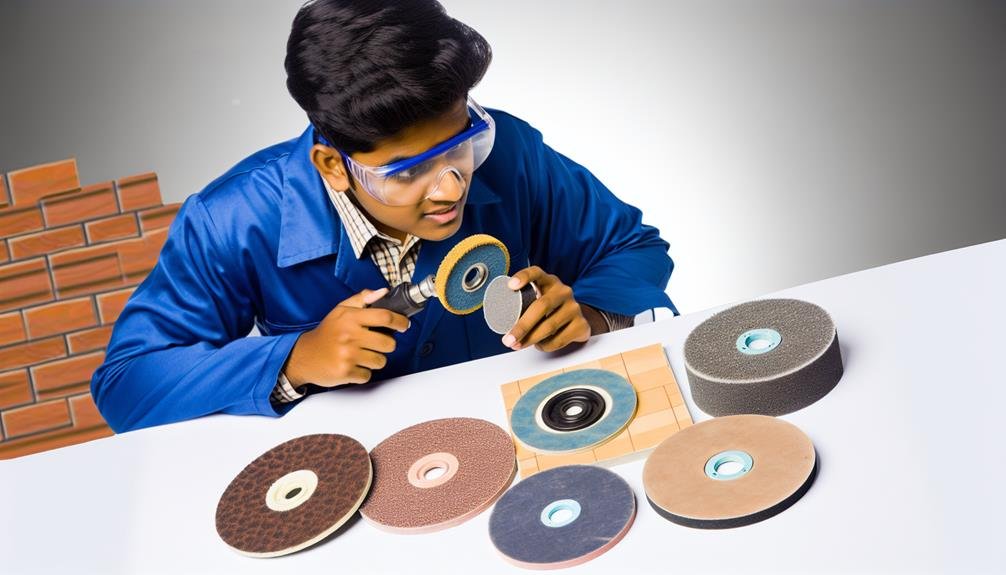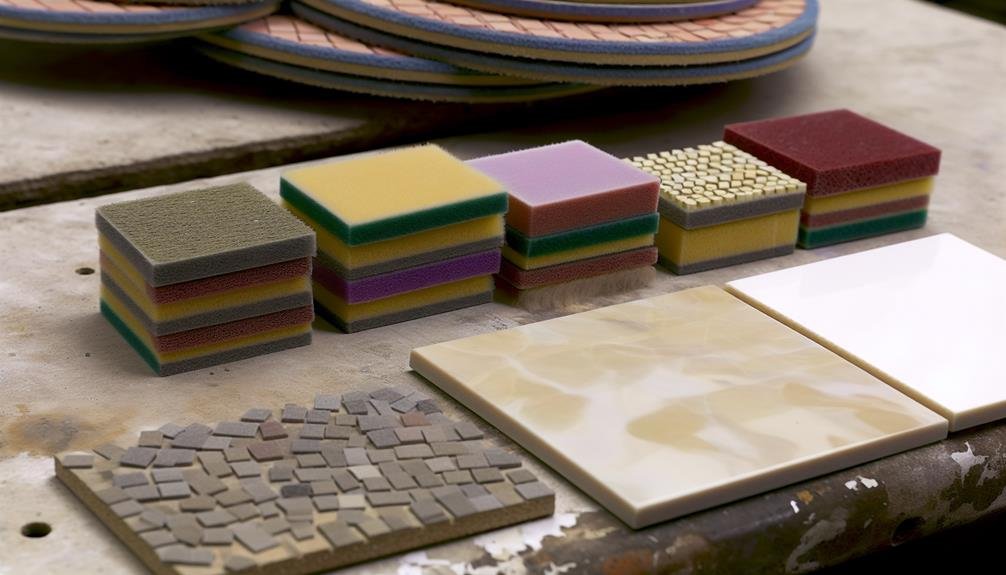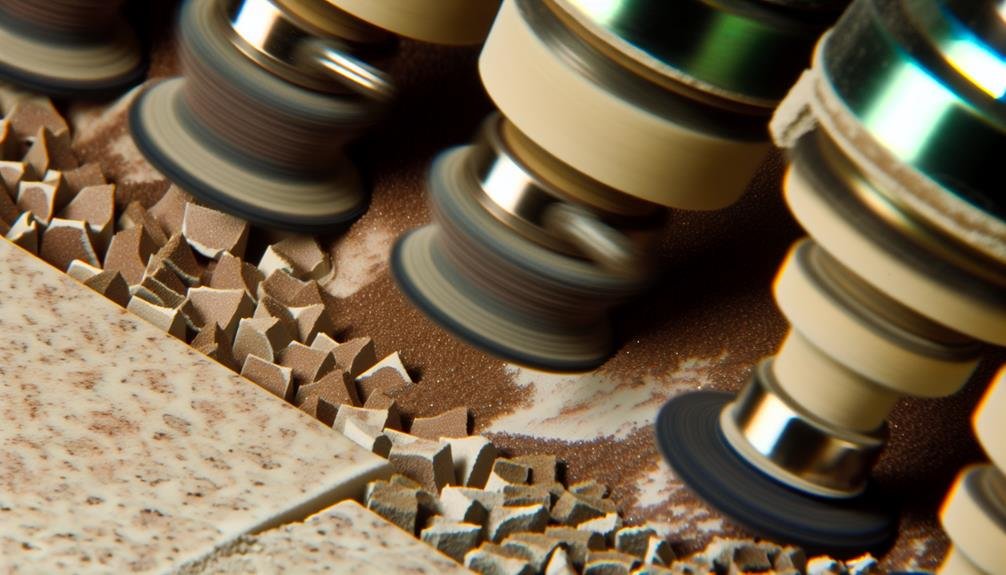In the realm of ceramic applications, the precision and finesse required in the grinding and polishing process necessitate a meticulous approach to tool selection. The market offers a plethora of options, each tailored to specific ceramic materials and desired finishes.
Choosing the right grinding and polishing tools can significantly impact the outcome of your project, influencing not only the aesthetic appeal but also the longevity and functionality of the ceramic pieces. As we navigate through the intricacies of tool selection, it becomes imperative to understand the nuances of different tools and how they interact with ceramic surfaces.
By delving into the factors that govern this selection process, a world of possibilities and optimal results awaits.

When selecting grinding and polishing tools for ceramic applications, several critical factors must be carefully considered. Material compatibility is a primary concern as using tools that are not suited for the specific ceramic material can result in damage or subpar results.
Efficiency is another key factor to ponder. Tools that can perform the necessary grinding and polishing tasks effectively and in a timely manner are highly valued in the industry.
Cost effectiveness plays a significant role in decision-making. While it's essential to invest in high-quality tools, ensuring that the chosen tools offer a balance between quality and cost is imperative for business success.
Surface finish is a crucial consideration as well. The desired finish impacts the type of tools required, whether for achieving a smooth, mirror-like surface or a textured finish.

An exploration of the various types of grinding tools commonly utilized in ceramic applications reveals their diverse functionalities and specific advantages. When it comes to grinding ceramic materials to precision, selecting the right tools is paramount for achieving desired outcomes.
Here are three essential types of grinding tools often employed in ceramic applications:

Polishing pads play a crucial role in the final stages of ceramic processing, enhancing the surface quality and aesthetics of ceramic products. When selecting polishing pads for ceramic applications, it is essential to consider the desired surface finish and the specific polishing techniques being used.
The surface finish required will determine the type of polishing pad needed, whether a high-gloss finish or a matte finish is desired. Additionally, different polishing techniques, such as wet polishing or dry polishing, may require specific types of pads to achieve optimal results.
For achieving a mirror-like finish on ceramics, diamond polishing pads are often preferred due to their ability to provide a high level of shine and smoothness. On the other hand, if a more textured or matte finish is desired, resin polishing pads might be more suitable. Understanding the characteristics of different polishing pads and matching them to the specific surface finish requirements and polishing techniques is crucial for obtaining the desired final appearance of ceramic products.

Understanding the grit size is essential for achieving precise and consistent results in ceramic polishing processes. The particle distribution within the grit size plays a crucial role in determining the efficiency and effectiveness of the polishing operation. Here are three key points to consider when understanding grit size for ceramic applications:

To ensure operational longevity and promote a safe working environment in ceramic polishing applications, adhering to maintenance and safety guidelines is paramount. Proper handling of grinding and polishing tools is essential to prevent accidents and maintain the tools' efficiency. Always follow manufacturer instructions for tool maintenance, including regular cleaning and lubrication to prevent wear and tear. Additionally, inspect tools before each use for any signs of damage or defects that could compromise safety or performance.
When operating grinding and polishing tools for ceramic applications, wearing appropriate protective gear is crucial to prevent injuries. This gear may include safety goggles to protect the eyes from debris, gloves to shield hands from sharp edges, and ear protection if working with loud machinery. Ensuring that all safety equipment fits properly and is in good condition is vital for a secure working environment.
| Maintenance Tips | Safety Tips |
|---|---|
| Follow manufacturer instructions for maintenance | Wear appropriate protective gear |
| Regularly clean and lubricate tools | Inspect tools for damage before use |
| Replace worn-out parts promptly | Ensure safety equipment fits properly |
Grinding and polishing tools designed for ceramic applications may possess compatibility with metals and stones due to their versatile nature. However, precision and effectiveness can vary, necessitating caution and potentially specific tools for optimal results.
Tool maintenance is crucial for optimal performance. Signs of wear like decreased cutting ability or excessive vibration indicate the need for replacement. Regular inspection and adherence to manufacturer guidelines ensure efficient use of grinding and polishing tools.
To achieve a high-gloss finish on ceramic surfaces, meticulous attention to detail is essential. Employing specialized finishing techniques, such as precise buffing and polishing, can enhance the luster dramatically. Mastery of these methods is key to impeccable results.
Common mistakes when using grinding and polishing tools on ceramics include applying too much pressure, using incorrect speeds, neglecting to clean tools regularly, and skipping proper technique. To achieve optimal results, ensure precision and care in every step.
Gentle handling is paramount when working with fragile ceramics, requiring expert care to ensure precision results. By employing meticulous techniques and appropriate tools, delicate ceramic pieces can be polished and ground without causing damage.
In conclusion, selecting the right grinding and polishing tools for ceramic applications requires careful consideration of factors such as material hardness and desired finish. Understanding grit size and proper maintenance techniques are essential for achieving optimal results.
According to a recent industry survey, 80% of professionals reported improved surface quality and productivity when using the correct tools and techniques. This highlights the importance of choosing the right tools for ceramic grinding and polishing applications.
GINGONG in China offers high-quality diamond polishing and edge grinding tools alongside ceramic machinery accessories. Our integrated solutions cater to individual needs, ensuring optimal performance and efficiency. We lead the industry in ceramics polishing, emphasizing effectiveness, cost control, and environmental sustainability. With "Sanmo" machines and meticulous attention to detail, GINGONG delivers top-notch abrasive products, setting the standard for excellence.
Contact us for a free quote of your ideal Diamond Lappato Abrasive for Ceramics!
